Trump is finally dropping his insistence that only China is paying for his tariffs
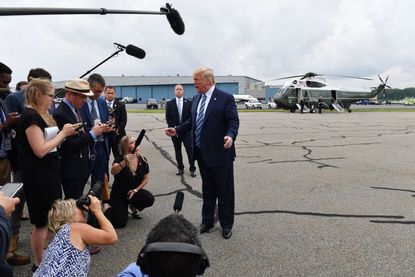

On Tuesday, President Trump explained that he is delaying 10 percent tariffs on thousands of Chinese consumer goods until Dec. 15 "for the Christmas season, just in case some of the tariffs would have an impact on U.S. customers. ... Just in case they might have an impact on people, what we've done is we've delayed it so that they won't be relevant to the Christmas shopping season."
Analysts who had seen the list of items spared until mid-December — cellphones, video game consoles, laptops, toys, some clothing items and footwear — had already figured this out. But Trump's remarks were notable in that he finally broke from his mantra that "the Chinese are paying the full price of his tariffs," Heather Long writes at The Washington Post. "It's a line that the overwhelming majority of economists and business owners say is false, but Trump kept saying it — until Aug. 13."
U.S.-based companies pay the tariffs on Chinese imports, and a U.S. family of four would pay about $350 a year if Trump's latest tariffs took effect and the full cost was passed on to consumers, the Tax Foundation estimates. The previous round of tariffs focused on parts and supplies, and "many U.S. companies opted to absorb a lot of the added costs, effectively canceling out some of Trump's corporate tax cut," Long notes. But the new tariffs "will hit may finished goods like shoes and iPhones that are assembled fully in China," and "business owners say it's a lot more difficult to absorb those costs or find ways around them."
Subscribe to The Week
Escape your echo chamber. Get the facts behind the news, plus analysis from multiple perspectives.

Sign up for The Week's Free Newsletters
From our morning news briefing to a weekly Good News Newsletter, get the best of The Week delivered directly to your inbox.
From our morning news briefing to a weekly Good News Newsletter, get the best of The Week delivered directly to your inbox.
Most retailers will have stocked their holiday products before Sept. 1, Reuters says, but if you're inclined to last-minute shop, Trump still plans to impose 10 percent tariffs on thousands of other consumer goods in September, including Apple Watches and Fitbits, smart speakers from Google and Amazon, Bluetooth headphones, flat screen TVs, live animates, dairy products, lithium ion batteries, and golf balls, among other merchandise.
Create an account with the same email registered to your subscription to unlock access.
Sign up for Today's Best Articles in your inbox
A free daily email with the biggest news stories of the day – and the best features from TheWeek.com
Peter has worked as a news and culture writer and editor at The Week since the site's launch in 2008. He covers politics, world affairs, religion and cultural currents. His journalism career began as a copy editor at a financial newswire and has included editorial positions at The New York Times Magazine, Facts on File, and Oregon State University.
-
 AI is causing concern among the LGBTQ community
AI is causing concern among the LGBTQ communityIn the Spotlight One critic believes that AI will 'always fail LGBTQ people'
By Justin Klawans, The Week US Published
-
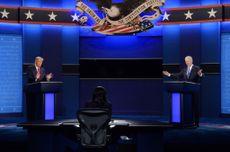 'Modern presidents exercise power undreamed of by the Founding Fathers'
'Modern presidents exercise power undreamed of by the Founding Fathers'Instant Opinion Opinion, comment and editorials of the day
By Harold Maass, The Week US Published
-
 Today's political cartoons - April 15, 2024
Today's political cartoons - April 15, 2024Cartoons Monday's cartoons - flamingos in flight, taxes, and more
By The Week US Published
-
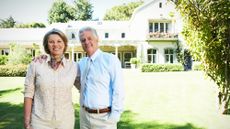 Empty-nest boomers aren't selling their big homes
Empty-nest boomers aren't selling their big homesSpeed Read Most Americans 60 and older do not intend to move, according to a recent survey
By Peter Weber, The Week US Published
-
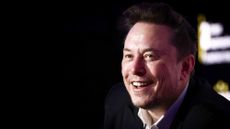 Brazil accuses Musk of 'disinformation campaign'
Brazil accuses Musk of 'disinformation campaign'Speed Read A Brazilian Supreme Court judge has opened an inquiry into Elon Musk and X
By Rafi Schwartz, The Week US Published
-
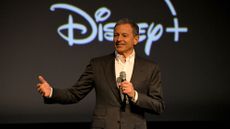 Disney board fends off Peltz infiltration bid
Disney board fends off Peltz infiltration bidSpeed Read Disney CEO Bob Iger has defeated activist investor Nelson Peltz in a contentious proxy battle
By Rafi Schwartz, The Week US Published
-
 Disney and DeSantis reach detente
Disney and DeSantis reach detenteSpeed Read The Florida governor and Disney settle a yearslong litigation over control of the tourism district
By Peter Weber, The Week US Published
-
 Visa and Mastercard agree to lower swipe fees
Visa and Mastercard agree to lower swipe feesSpeed Read The companies will cap the fees they charge businesses when customers use their credit cards
By Peter Weber, The Week US Published
-
 Reddit IPO values social media site at $6.4 billion
Reddit IPO values social media site at $6.4 billionSpeed Read The company makes its public debut on the New York Stock Exchange
By Peter Weber, The Week US Published
-
 Housing costs: the root of US economic malaise?
Housing costs: the root of US economic malaise?speed read Many voters are troubled by the housing affordability crisis
By Peter Weber, The Week US Published
-
 Feds cap credit card late fees at $8
Feds cap credit card late fees at $8speed read The Consumer Financial Protection Bureau finalized a rule to save households an estimated $10 billion a year
By Peter Weber, The Week US Published